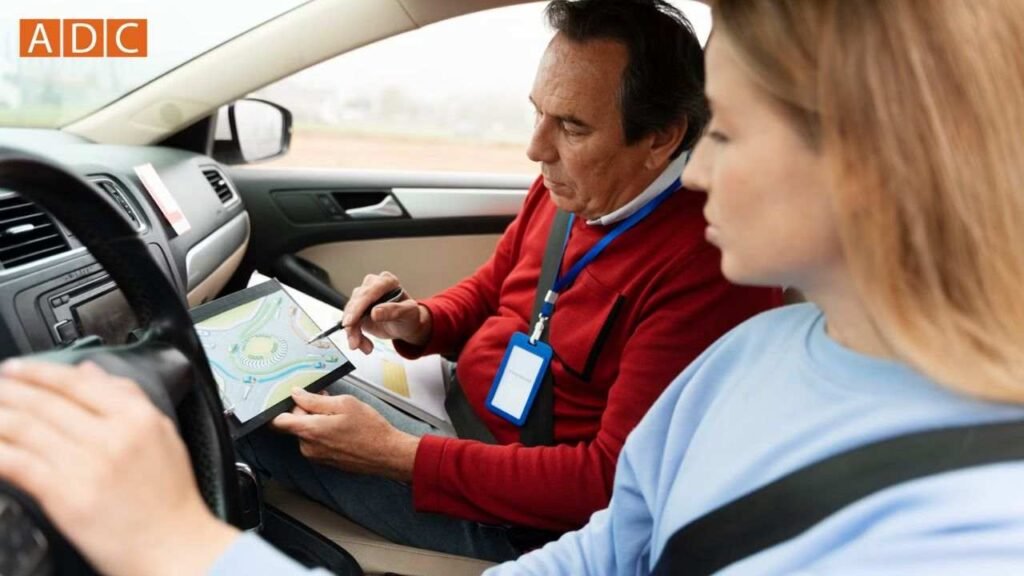Learning to drive is an important accomplishment in a person’s life. In California, driving is more than a convenience—it’s often a necessity due to the vast distances and limited public transportation options. Whether you’re a teenager preparing for your first driving experience or an adult looking to enhance your driving skills, enrolling in a driving school is a wise investment. However, the cost of driving school in California can vary widely depending on several factors. This guide will help you navigate the options available, understand the costs, and choose the best driving school for your needs.
Understanding the Cost Factors
The cost of driving school in California is influenced by several factors, each playing a role in determining the final price you’ll pay. Here’s a more detailed look at the important factors:
1. Geographical Location
- Urban vs. Rural Areas: Driving schools in major urban centers like Los Angeles, San Francisco, and San Diego tend to be more expensive compared to those in smaller towns or rural areas. This is primarily due to higher operating costs and increased demand in urban settings.
- Local Regulations: Some regions may have specific regulations or requirements for driving schools, affecting their pricing structures.
2. Type of Driving School
- Traditional In-Person Schools: These schools offer a blend of classroom instruction and behind-the-wheel training. Costs typically range from $300 to $800 for a full course, depending on the number of hours and the reputation of the school.
- Online Driving Schools: Offering flexibility and often lower costs, online driving schools charge between $50 to $150 for the theoretical part of driver education. However, you’ll still need to arrange for practical driving lessons, which can add to the cost.
- Specialized Schools: Some driving schools specialize in specific areas such as defensive driving, senior driving improvement, or teen driver education, and these may have different pricing models.
3. Program Duration and Intensity
- Basic Programs: These typically include the minimum required hours of instruction and driving practice, making them more affordable.
- Comprehensive Programs: Offering more extensive instruction and additional driving hours, comprehensive programs are more expensive but provide thorough preparation.
4. Instructor Expertise
- Experience and Qualifications: Instructors with more experience or special certifications may charge higher rates, reflecting their expertise and success in training students.
5. Additional Services and Fees
- Testing Assistance: Some schools offer DMV testing assistance, which can add to the cost.
- Materials and Resources: Fees for textbooks, study guides, or access to driving simulators may not be included in the base price.
- Insurance: Some driving schools provide insurance coverage during lessons, which may be reflected in their pricing.
Breakdown of Average Costs
Understanding the typical costs for different types of driving schools can help you budget effectively:
1. Teen Driving Programs
Teen driving programs are often the most popular and include a combination of classroom and behind-the-wheel instruction. Below is a breakdown of the average costs:
- Classroom Instruction: Typically 30 hours of classroom instruction, costing between $100 to $200.
- Behind-the-Wheel Training: Usually 6 to 10 hours of driving practice, costing $250 to $500.
- Total Package: The complete package for teen drivers generally ranges from $350 to $700.
2. Adult Driving Lessons
Adults seeking to learn to drive or improve their skills may choose from several options:
- Hourly Rates: Most driving schools charge hourly rates for adult driving lessons, ranging from $50 to $100 per hour.
- Package Deals: Many schools offer packages for multiple lessons, which can be more cost-effective. Packages typically range from $200 to $600 for several hours of instruction.
3. Defensive Driving Courses
Defensive driving courses are designed to improve driving skills and safety awareness:
- Classroom-Only Courses: These may cost between $50 to $150, focusing on theoretical knowledge.
- Comprehensive Packages: Including both classroom instruction and practical training, these packages range from $200 to $500.
4. Online Driving Schools
Online driving schools provide convenience and often lower prices:
- Basic Online Courses: Costing between $30 to $100, these courses cover the theoretical aspects of driving.
- Hybrid Programs: Combining online learning with in-person driving lessons, hybrid programs typically range from $200 to $500.
Choosing the Right Driving School
Selecting the right driving school is crucial for ensuring quality education and getting the best value for your money. Here are some guidelines to help you make an informed selection.
1. Research and Compare
- Look for Reviews: Read online reviews and testimonials from previous students to gauge the quality of instruction and customer satisfaction.
- Compare Offerings: Examine what different schools offer, including the number of lessons, instructor qualifications, and any additional services.
2. Visit the School
- Check Facilities: Visit the school to see their facilities, meet instructors, and ask about their teaching methods.
- Ask Questions: Inquire about the curriculum, instructor experience, and how they handle students with special needs or anxiety about driving.
3. Understand the Contract
- Read the Fine Print: Carefully read any contracts or agreements before signing. Ensure you understand what’s included in the price and any policies regarding cancellations or rescheduling.
- Clarify Costs: Ask for a detailed breakdown of costs, including any additional fees that may apply.
4. Consider Your Needs
- Choose the Right Program: Determine whether you need a basic program, advanced driving training, or specialized instruction.
- Flexible Scheduling: Ensure the school offers flexible scheduling that fits your availability, especially if you have work or school commitments.
Additional Tips for Learning to Drive
Beyond choosing the right driving school, there are several other factors to consider as you learn to drive:
1. Practice Regularly
- Consistent Practice: Regular practice is essential for building confidence and mastering driving skills.
- Use a Learner’s Permit: Make the most of your learner’s permit by practicing with a licensed driver.
2. Stay Calm and Confident
- Manage Anxiety: If you feel anxious about driving, consider taking additional lessons to boost your confidence.
- Positive Mindset: Maintain a positive attitude and remind yourself that learning to drive is a process.
3. Prepare for the DMV Test
- Study the Handbook: Thoroughly study the California Driver Handbook to understand the rules of the road.
- Take Practice Tests: Use online practice tests to familiarize yourself with the DMV test format and question types.
4. Safety First
- Prioritize Safety: Prioritise safety and obey traffic laws to provide a safe driving experience.
- Defensive Driving: Use defensive driving strategies to anticipate and deal with potential problems.
Conclusion
Enrolling in a driving school is an investment in your future, providing you with the skills and confidence needed to navigate California’s roads safely. By understanding the various factors that influence the cost of driving school, you can make an informed decision and choose a program that fits your needs and budget. Whether you opt for a basic package, an advanced course, or online training, selecting the right driving school will set you on the path to becoming a competent and responsible driver.
Remember that being a skilled driver requires patience, practice, and dedication to learning. With the right preparation and support, you’ll be well-equipped to handle the challenges of driving in California.
For Local SEO in Abu dhabi visit.




